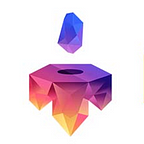Tokenomics in DeFi and GameFi: Is Dual Token Model the Future of Web3 Games?
Tokenomics, or the study of the economics of tokens, is a key aspect of the blockchain industry. For any blockchain participant or potential project investor, tokenomics should be a top-of-mind question as it comprises the fundamental structure of a project’s economics and value system. While many DeFi and GameFi projects are currently using the dual token model as their primary approach; whether or not it represents the future of Web3 games remains a question that must be carefully considered and responded to.
The Dual Token Model
The dual token model, as the name implies, divides the project’s ecosystem into two tokens — the governance token and the utility token — for improved usability and a more stable cryptocurrency (or NFT) value. Governance tokens allow users to vote for proposals that affect the functions and systems in DAOs (decentralized autonomous organizations). Utility tokens, on the other hand, are digital assets that carry use cases in a project or ecosystem. A common use of utility tokens in DeFi projects, for example, would be for payment of transaction fees.
In the first half of 2020, Axie Infinity introduced SLP (Smooth Love Potion) to alleviate selling pressure on AXS, Axie Infinity’s original game token. Since then, almost every major title has implemented a dual-token economy in their projects.
Axie Infinity offers two tokens, $SLP and $AXS, as incentives for users to play the game. The former, $SLP, is a utility token with an unlimited supply that Axie Infinity players may use to perform in-game tasks such as paying breeding fees for their Axies (game characters) and purchasing Axies from the built-in marketplace. The other, $AXS, is a governance token with a maximum supply of 27 million. By allowing players to purchase $AXS directly from crypto exchanges, $AXS adds value to the Axie Infinity ecosystem. Holders of $AXS can also engage in in-game governance and stake their tokens on the platform to earn passive rewards.
The Risk of Runaway Inflation
When putting the dual toke model into practice, DeFi projects like Maker and Terra peg their utility tokens ($DAI and $UST) to $1 and mint new governance tokens ($MKR and $LUNA) when utility token prices fall in order to buy up the utility tokens and keep their price stable. However, as illustrated above, GameFi projects such as Axie would often resort to a different approach. They transfer the inflationary feature onto the utility token $SLP, preventing the governance token $AXS from inflating..
Regardless of where the feature is placed, both projects opt for an infinitely inflationary model as a solution. The method appears to be viable: as long as someone continues to buy $MKR/$LUNA/$SLP, the $DAI/$UST/$AXS price will be theoretically stable even if the other token’s price crashes. The only issue, or the central defect, is that once a certain threshold is crossed, hyperinflation occurs, and the entire system will be quickly destroyed. In other words, the model is highly unsustainable and will almost certainly lead to runaway inflation as time advances.
It is, therefore, important for game studios pivoting to web3 to carefully consider their token design and economics. Blindly splitting the value and demand into two tokens or imitating DeFi projects’ dual token model is not a panacea. Even though studying the DeFi industry can provide valuable insights for the development of sustainable token models in the GameFi industry, GameFi’s token economics designers should note that GameFi and DeFi are very different, and the existing dual token model is only referential.
Towards Better GameFi Tokenomics
Some NFT projects are experimenting with innovative solutions to address the differences between GameFi and Defi projects while delivering more suitable tokenomics for Web3 gaming.
Yuga, for example, has used airdrops and created narratives to help increase the value of the airdropped items and that of BAYCs. By airdropping 19,134 MAYCs, 9,602 BAKCs, 1 billion APEs, and 98,115 Otherdead to BAYC holders, the problem of economic scalability is addressed. And as the narratives of the airdropped items raise the value of themselves, the value of BAYC increases even more. Unsurprisingly, the success of Yuga has resulted in other projects adopting similar strategies, including RTFKT, Moonbirds, and more.
This NFT economics trend has shed light on GameFi tokenomics’ future. When in-game NFTs and FTs issue new tokens (such as MAYC and $SLP), high-end products (such as BAYC and $AXS) are also impacted. Hence, a dual token model that separates the two provides a closed economic zone is still needed to help maintain a more stable price for the high-end tokens.
Also, the issuance and distribution of backup tokens should not be pre-decided but dynamically and automatically adjusted according to the data and feedback from the player community. Tokenomics do not have a one size fits all approach. The complexity of blockchain games would only further confirm such a truth.
The dual token model has the advantage of low user cognitive cost as well as the ability to encourage a wide range of consumption behavior. Using two tokens solely to transfer instability from one to another, however, distorts the product structure and is very likely to fail in the long run. To avoid unsustainable models and potential collapses, Web3 game projects must carefully consider their token design and make calculated decisions to produce the desired result.
About MixMarvel
MixMarvel is the world’s leading blockchain content-incubation platform and creators community. By in-depth exploring the open world and integrating world-renowned IP with high-quality content, MixMarvel connects investors and mass users through asset distribution, content publication, DeFi tools, infrastructure, community co-creation, and other diversified scenarios in a new ecosystem of dapps. Its ecosystem comprises a broad portfolio of FT/NFT assets, including the MIX, RPG, and HEROES tokens; blockchain content, including the GameFi application DeHero; and infrastructures, including Rangers Protocol and MixMarvel SDK. For more information, visit https://linktr.ee/MIXMARVEL.
